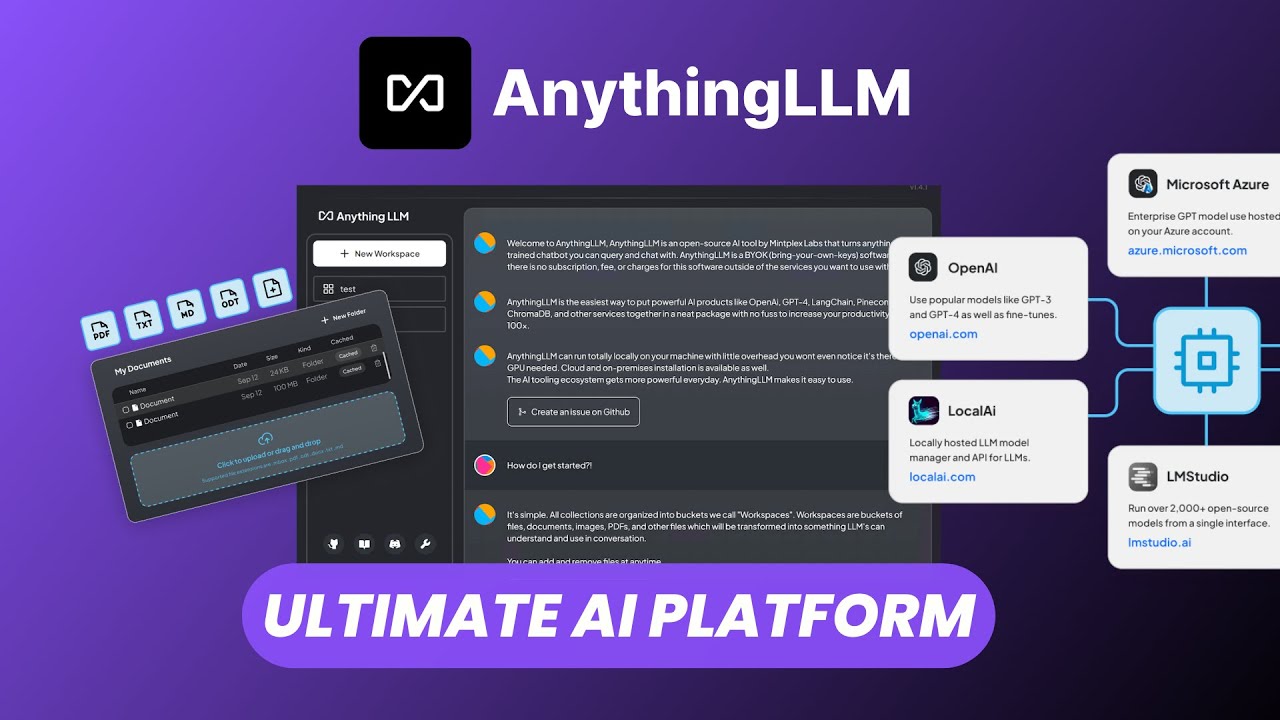Setup AnythingLLM Server on Bare Metal Ubuntu
 Muhammad Hassan
Muhammad Hassan
Setting up AnythingLLM on a bare metal server gives you direct control over performance and customization without the overhead of Docker. This guide will walk you through the process of installing and running the AnythingLLM application in production on an Ubuntu server, using systemd to manage services.
Prerequisites
Before we start, ensure your server meets the following requirements:
At least 2GB of RAM.
Minimum 10GB of disk space.
Node.js v18.
Yarn package manager.
Step 1: Installing Node.js and Yarn
First, you need to install Node.js and Yarn. Follow these steps:
Install Node.js:
curl -fsSL https://deb.nodesource.com/setup_18.x | sudo -E bash - sudo apt-get install -y nodejsInstall Yarn:
npm install --global yarn
Verify the installations:
node -v
yarn -v
Step 2: Clone the AnythingLLM Repository
Next, clone the AnythingLLM repository to your server:
git clone https://github.com/Mintplex-Labs/anything-llm.git
cd anything-llm
Step 3: Install Dependencies
Navigate to the
anything-llmdirectory and install the necessary dependencies:yarn setupPrepare the Environment: Copy the environment file template and adjust paths as needed:
cp server/.env.example server/.envSet the
STORAGE_DIRpath insideserver/.env:STORAGE_DIR="/your/absolute/path/to/server/storage"Edit Frontend Configuration: Update the frontend
.envfile for production:cd frontend nano .envSet
VITE_API_BASE='/api'for proper API routing.
Step 4: Build the Frontend
Build the frontend application:
cd frontend yarn buildMove the build files to the server public directory:
cp -R frontend/dist server/public
Step 5: Set Up the Database
Prepare the SQLite database with the following commands:
cd server
npx prisma generate --schema=./prisma/schema.prisma
npx prisma migrate deploy --schema=./prisma/schema.prisma
Step 6: Run AnythingLLM
Now, you need to start both the server and collector components of AnythingLLM.
Start the Server:
cd server NODE_ENV=production node index.js &Start the Collector: In a new terminal or SSH session:
cd collector NODE_ENV=production node index.js &
At this point, AnythingLLM should be running locally on http://localhost:3001. But to keep these processes running and manage them properly, we’ll configure systemd.
Step 7: Setting Up Systemd Services
Using systemd, we can ensure that both the server and the collector start automatically on boot and run independently of your SSH session.
1. Create a Systemd Service for the Server
Create the service file:
sudo nano /etc/systemd/system/anythingllm-server.serviceAdd the following configuration:
[Unit] Description=AnythingLLM Server After=network.target [Service] WorkingDirectory=/home/supportlinux/anything-llm/server ExecStart=/usr/bin/node index.js Environment=NODE_ENV=production Restart=always RestartSec=10 User=supportlinux Group=supportlinux [Install] WantedBy=multi-user.targetEnable and start the service:
sudo systemctl daemon-reload sudo systemctl start anythingllm-server sudo systemctl enable anythingllm-server
2. Create a Systemd Service for the Collector
Create the collector service file:
sudo nano /etc/systemd/system/anythingllm-collector.serviceAdd the following configuration:
[Unit] Description=AnythingLLM Collector After=network.target [Service] WorkingDirectory=/home/supportlinux/anything-llm/collector ExecStart=/usr/bin/node index.js Environment=NODE_ENV=production Restart=always RestartSec=10 User=supportlinux Group=supportlinux [Install] WantedBy=multi-user.targetEnable and start the collector service:
sudo systemctl daemon-reload sudo systemctl start anythingllm-collector sudo systemctl enable anythingllm-collector
Step 8: Verify Both Services
Check the status of the server:
sudo systemctl status anythingllm-serverCheck the status of the collector:
sudo systemctl status anythingllm-collectorView logs:
For server:
sudo journalctl -u anythingllm-server -fFor collector:
sudo journalctl -u anythingllm-collector -f
Step 9: Accessing AnythingLLM
With both services running, you should now be able to access AnythingLLM on http://your-server-ip:3001 or through your domain if you’ve set up DNS.
Subscribe to my newsletter
Read articles from Muhammad Hassan directly inside your inbox. Subscribe to the newsletter, and don't miss out.
Written by

Muhammad Hassan
Muhammad Hassan
Hey there! I'm currently working as an Associate DevOps Engineer, and I'm diving into popular DevOps tools like Azure Devops,Linux, Docker, Kubernetes,Terraform and Ansible. I'm also on the learning track with AWS certifications to amp up my cloud game. If you're into tech collaborations and exploring new horizons, let's connect!